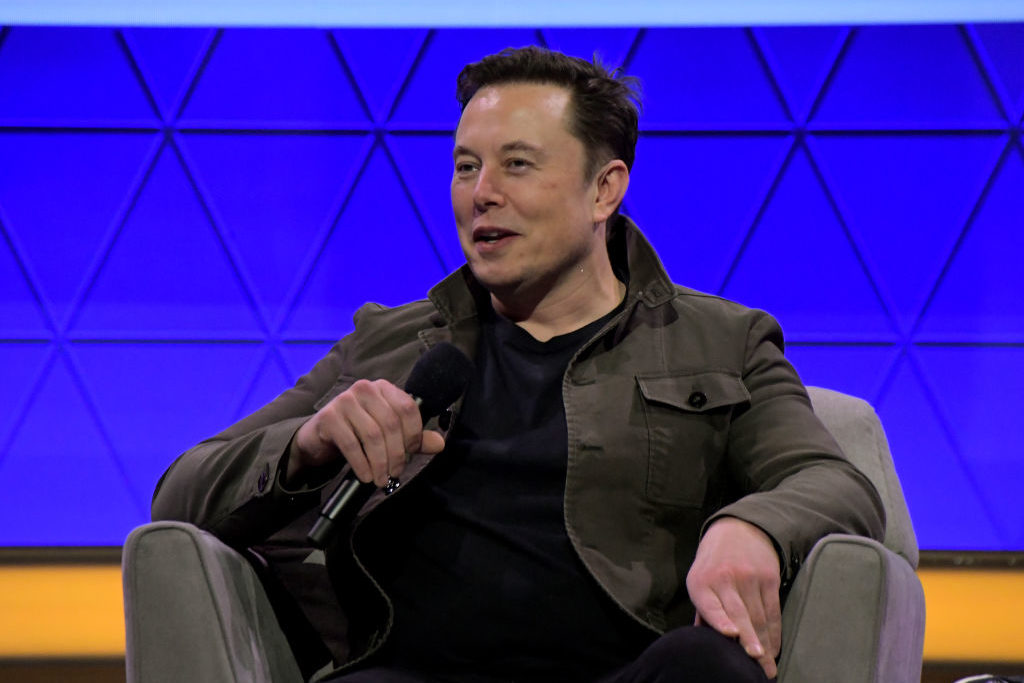When Elon Musk took to the stage at the California Academy of Sciences on Tuesday, he gave the world the first insight into his vision for mapping and ultimately controlling the brain.
Three years ago, Musk formed Neuralink which was specifically created to respond to the threat that Musk’ believes is posed by the imminent threat of thinking machines powered by AI. Musk believes that phase of the information revolution could mark the end of humanity as robots outpace humans in intelligence and pace of evolution.
His answer is to fully understand exactly how the brain works and, in the process, he believes that the new science will find the cure for many of humanity’s most deadly illnesses such as Parkinson’s, Alzheimer’s and PTSD.
Today, Neuralink employs around 90 scientists and Tuesday’s speech was in many ways a recruiting pitch so that the company can attract top talent from around the world. But Musk is competing in a crowded and very well-funded field so it’s unclear if his bold vision, when matched with his chaotic management style, will prove enough of a draw.
Certainly, the brain is the final frontier of human exploration and its mysteries have baffled scientists for generations. This is hardly surprising as there are 100 billion neurons in the brain with around 500 trillion connections.
For the first time, Musk’s team and scientists have begun mapping those connections which will allow for specific targeting of medical conditions. There is hope that the infirm will walk, the autistic will gain a clearer view of their world and those facing a slow decline into old age will instead be given – literally – a new lease on life.
Once the brain can be completely mapped, treatments can be designed very specifically to influence parts of the brain while ignoring other parts. With that kind of understanding, there is the possibility of creating artificial brain components and perhaps even the possibility of building a brain from scratch.
This may sound impossibly futuristic but Musk has been joined not just by universities all over the world but by two other tech titans, Mark Zuckerberg of Facebook and Bryan Johnson, one of the brains behind PayPal. Zuckerberg sees his brain research as a way of improving the connectivity of everyone who uses Facebook while Johnson sees chip implants in the brain as a way of improving health and performance.
Zuckerberg imagines a world where our brains will be liberated from the constraints of speech or typing and instead be able to communicate through thoughts which can operate around five times the speed of the fastest action. Thinking then becomes the equivalent of doing whether that is by connecting with another person without the cumbersome intrusion of speech or by connecting directly to a computer so that I would not have to hunt and peck my way through this article. Already, Zuckerberg’s researchers are able to distinguish whether a person is visualizing an elephant or a giraffe simply by looking at the brain’s neural activity.
Unlike Zuckerberg, Musk is on a personal mission to save the world from the attack of the Killer Robots. He fears that as Artificial Intelligence becomes ever smarter, the robots will begin to think for themselves and will acquire IQs that are as beyond our comprehension as ours are to a monkey today. When that happens, he fears that humans will simply become irrelevant to a world controlled by the thinking machines.
His answer has been to form Neuralink which will design a Brain Machine Interface that will allow any human equipped with it to access all the world’s knowledge. The BMI would create ‘a symbiosis with Artificial Intelligence,’ according to Musk.
It might work like this: you would receive an injection of nanotubes that would ‘swim’ through the bloodstream to predesignated parts of the brain, unfurl, connect to form a network and then connect to the world of knowledge.
I might be having lunch with you when I would suggest you read a book I found particularly interesting. You would ‘think’ to get the book, the BMI would fetch it and in the time it has taken you to read this, you would have ‘read’ the book, digested the knowledge within it and we could begin an interesting conversation about it.
Sound too fantastic to be true? Maybe. But Musk claims he will have a BMI prototype running within three years. Next year, the Neuralink team will begin human trials with quadriplegics where there is the real possibility that this new science will allow the paralyzed to walk once again.
The only problem with Musk’s solution is that a BMI is likely to be very, very expensive and so only available to billionaires like Musk himself. The rest of us might have to become used to being the servants of our new robot masters.
Johnson’s startup Kernel is focused initially on understanding how the brain works and use that knowledge for medical treatment. Eventually, Johnson would like to see brain implants be used to improve individual intellectual and physical performance.
This new focus on the brain is not just the preserve of Silicon Valley billionaires. In 2013, the US government launched an initiative called the Brain Research through Advancing Innovative Neurotechnologies (BRAIN) with a goal of mapping all the electrical connections inside our heads. In six years, scientists have gone a long way to understanding just how individual brain cells work and what they do. That has led to the development of a whole new class of treatment using electrical stimulation that has proved very successful in treating patients with symptoms of Parkinson’s disease or depression.
In parallel with the BRAIN initiative, the Pentagon is looking at ways of improving the performance of pilots and soldiers using implants or external attachments. This could mean that soldiers will be able fire their weapons using thoughts rather than a trigger finger and pilots would fly their aircraft and fire missiles using the same process. A deeper understanding of the brain’s process would allow for more effective interrogation of prisoners, an electrical ‘bombardment’ that would cause enemy soldiers to fall asleep or start weeping uncontrollably.
As with so much of the technology revolution, which offers the promise of replacing any aging limb or organ and now of replicating our brain, there is a philosophical question around what it means to be human. After all, if every part of our body can be replaced by something that is manufactured, then the very definition of humanity must change.
Already, it is possible to manufacture a designer baby and there is the real prospect that within a few years any human with the money and access could live to be 150 years old. Aside from age, some of the devices under development will enable users to stimulate their brains to create artificial feelings of joy. Or, in a more dystopian world, it might be possible to hack a person’s brain to create an unbearable sense of sadness.
At either extreme, our sense of ourselves is already becoming fundamentally changed while there are no controls over what is being developed in the name of humanity.


















